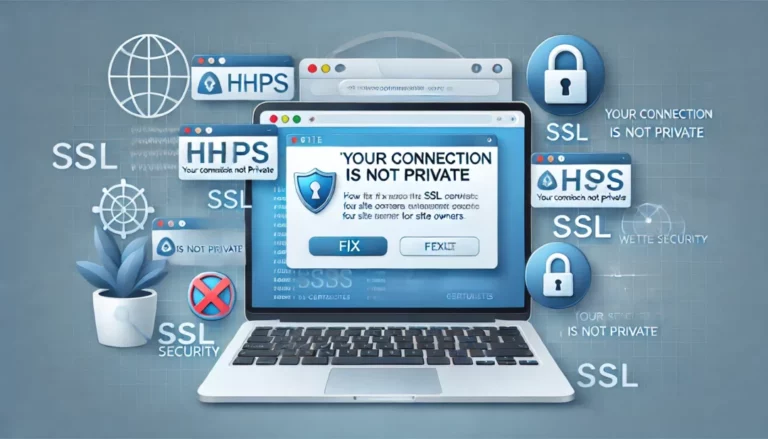
Setting up your own email server on a VPS with CyberPanel gives you control over your communications and boosts privacy. It may sound technical, but with the right steps, you’ll have a fully functional email server in no time. Plus, hosting your email server saves costs and eliminates reliance on third-party providers.
To get started, you’ll choose a VPS provider, install CyberPanel, and configure DNS records. Next, you’ll create email accounts, set up SSL for secure connections, and test your server to ensure everything works smoothly. By following these steps, you’ll gain a reliable, self-hosted email solution tailored to your needs.
Benefits Of Hosting Your Own Email Server
Hosting your own email server provides unique advantages that enhance control, privacy, and customization.
Enhanced Privacy
You maintain full control over your email data. Unlike third-party services storing messages on shared servers, your data resides solely on your VPS, limiting access to unauthorized parties.
Increased Security
You apply strict security measures, including enabling SSL, configuring spam filters, and implementing DKIM and SPF for authentication. These features reduce risks of spam, phishing, and unauthorized access.
Cost Efficiency
Monthly costs often remain lower since popular VPS plans can handle email services alongside other hosted applications. You avoid paying for per-user or storage-based email subscriptions.
Customization Options
You can create unlimited email accounts and aliases and configure advanced server-side rules. For example, setting up mailing lists or automating email forwards is easier with full administrative control.
No Vendor Lock-In
You avoid long-term dependency on a specific email service provider. If a VPS provider changes terms unfavorably, migrating to another is faster and more manageable.
Improved Deliverability
Properly configuring DNS records like SPF, DKIM, and DMARC helps emails reach inboxes rather than spam folders. Custom settings align with your domain, improving trust with email clients.
Learning Opportunity
By managing your server, you deepen your understanding of email protocols like SMTP and IMAP, DNS configurations, and cybersecurity practices. Skills gained enhance both personal and professional expertise.
Setting Up A VPS For Your Email Server
To host your own email server with CyberPanel, a properly configured VPS is essential. This section covers selecting a suitable VPS provider and preparing the server environment for CyberPanel installation.
Choosing The Right VPS Provider
- Evaluate Resources: Select a VPS with at least 2 GB RAM, 20 GB storage, and 1 CPU core for optimal email server performance. Providers like DigitalOcean, Vultr, and Linode offer plans within these specifications.
- Check Location: Choose a server location near your primary users to reduce latency. For example, select a data center in North America if most users are in the U.S.
- Ensure Reliability: Prioritize a VPS provider with 99.9% uptime and robust infrastructure. Check reviews and provider reputation before committing.
- Verify OS Options: Confirm that the VPS supports CyberPanel-compatible distributions like CentOS 7, CentOS 8, or Ubuntu 20.04.
- Assess Support & Pricing: Look for providers offering responsive technical support and affordable pricing tailored to your budget.
- Access the VPS: Use SSH keys or password access to log into your VPS. Run a terminal or use tools like PuTTY for SSH on Windows.
- Update the System: Execute commands like
sudo apt update && sudo apt upgrade -yon Ubuntu oryum update -yon CentOS to ensure the OS is current. - Set the Hostname: Assign a Fully Qualified Domain Name (FQDN) like
mail.yourdomain.comusinghostnamectl set-hostname mail.yourdomain.com. - Open Required Ports: Modify your firewall to allow traffic on ports for email services. Use UFW on Ubuntu or Firewalld on CentOS. For example:
sudo ufw allow 25,110,143,465,587,993,995/tcpsudo firewall-cmd --add-port=25/tcp --permanent
- Install Dependencies: Add required packages like
wgetorcurlfor downloading CyberPanel. Runsudo apt install wget curl -yoryum install wget curl -y.
sudo fallocate -l 1G /swapfilesudo chmod 600 /swapfilesudo mkswap /swapfilesudo swapon /swapfile
- Verify Settings: Validate the changes to ensure your server is ready for CyberPanel installation. Use commands like
free -hto check RAM and swap orhostnamectlto confirm the hostname.
Installing CyberPanel On Your VPS
Installing CyberPanel allows you to manage your email server efficiently with its intuitive interface. Follow these steps to correctly install and configure CyberPanel on your VPS.
Step-By-Step CyberPanel Installation Guide
- Access Your VPS. Connect to your VPS via SSH using a terminal or an SSH client such as PuTTY. Enter your VPS IP address, username, and password to log in.
- Update The System. Update and upgrade your server’s software packages to ensure compatibility and security. Use the following commands:
sudo apt update && sudo apt upgrade -y
- Install Dependencies. Ensure that required packages like
wgetare installed. Run the command:
sudo apt install wget -y
- Download The Installer. Use the no-interaction auto-installation script provided by CyberPanel. Execute:
wget -O installer.sh https://cyberpanel.net/install.sh
- Run The Installer. Start the installation by running the script:
sudo bash installer.sh
- Select Options During Installation. Follow the prompts and choose the essential options:
- Select “1” to install CyberPanel with OpenLiteSpeed.
- Accept or set your admin password and other prompted details.
The installation process may take several minutes to complete.
- Reboot The VPS. Restart the system to apply the changes:
sudo reboot
- Access The CyberPanel Dashboard. Once the VPS reboots, open your browser and navigate to
https://<YourVPS_IP>:8090to access the CyberPanel interface.
- Log In. Enter “admin” as the username and the password set during installation to log in to the CyberPanel dashboard.
- Set Up The Hostname. Navigate to “Server > Modify Hostname”, then update it to match your configured FQDN (Fully Qualified Domain Name).
- Update DNS Settings. Configure DNS records, including A records for your hostname and MX records for email services, through “DNS > Add/Delete Records”.
- Enable SSL For Hostname. Go to “SSL > Hostname SSL” and select your hostname to secure the system with an SSL certificate.
- Configure Firewall Rules. Open required ports like 25, 465, and 587 for mail services in “Security > Firewall”.
- Test Panel Functionality. Verify that you can access your panel and perform actions without errors to ensure the configuration is applied correctly.
Setting Up Your Email Server With CyberPanel
CyberPanel simplifies managing your email server on a VPS, offering user-friendly tools to handle email account creation, DNS configuration, and overall email management. Once CyberPanel is installed, follow these steps to set up your email server effectively.
Creating Email Accounts
- Access CyberPanel Dashboard
Log in to the CyberPanel dashboard using your VPS’s IP address and the admin account credentials. Navigate to the “Email” section located on the left-hand menu.
- Select Domain for Email Accounts
Choose an existing domain from the domains you’ve added in CyberPanel. If you haven’t configured a domain yet, add one under “Website > Create Website.”
- Create New Email Accounts
Go to “Email > Create Email.” Enter a username, set a strong password, and select your domain. Click “Create Email” to finalize. Avoid weak passwords to enhance account security.
- Verify Email Account Creation
Verify the creation under the “List Emails” section for your domain to confirm successful setup. Test login credentials in a mail client or webmail.
- Ensure Proper DNS Settings
Access your domain registrar’s DNS management interface. Update DNS records to point to your VPS’s IP by adding an A record (e.g., mail.yourdomain.com) and confirm propagation.
- Set Up MX Records
Add MX records for email routing. For example, set Priority: 10 and Mail Server: mail.yourdomain.com. Test changes to confirm delivery capability.
- Add SPF, DKIM, and DMARC Records
Create an SPF TXT record (e.g., v=spf1 +a +mx -all) to authenticate sending servers. Enable DKIM within CyberPanel, generating public/private key pairs automatically. Add a DMARC record as additional protection (e.g., v=DMARC1; p=none; rua=mailto:[email protected]).
- Verify DNS and Email Configuration
Use tools like MXToolbox or DNSChecker to verify DNS propagation and record accuracy. Correct any errors to avoid delivery failures or spam issues.
By following these steps, you’ll configure your email accounts and optimize DNS records for secure and reliable email delivery.
Enhancing Security And Performance
Securing and optimizing your email server is vital for protecting sensitive communications and maintaining reliable performance. You can enhance security and email deliverability through SSL encryption, spam protection, and proactive monitoring.
Enabling SSL For Your Email Server
Encrypt communications by enabling SSL for your email server. SSL ensures secure transmission between your server and email clients, protecting emails from interception.
- Install SSL Certificates: Log into the CyberPanel dashboard. Navigate to “SSL > Manage SSL” and select your email domain. Click “Issue SSL” to auto-generate a Let’s Encrypt certificate for your domain.
- Verify Installation: Test the SSL setup by accessing your email server over IMAP, POP3, and SMTP using encryption-enabled ports. Common SSL ports include 993 for IMAP, 995 for POP3, and 465 for SMTP.
- Enforce SSL Usage: Update your email client’s settings to use secured ports and enforce SSL/TLS encryption. Ensure outgoing connections utilize STARTTLS if applicable.
Regularly renewing and verifying SSL certificates keeps your email server secure.
Implementing Spam Protection And Monitoring
Prevent spam by implementing advanced filters and monitoring tools to safeguard your email server.
- Enable SpamAssassin: In CyberPanel, go to “Email > SpamAssassin.” Configure threshold values to filter unwanted emails without blocking legitimate ones.
- Set Up Email Blacklists And Whitelists: Add known spam domains to the blacklist. Similarly, whitelist trusted senders to avoid false positives. Access these options in the SpamAssassin settings.
- Activate RBL (Realtime Blackhole List): Configure CyberPanel to use reputable RBL services like Spamhaus, which block incoming emails from flagged IP addresses.
- Monitor Email Logs: Check server logs under “Email > Email Logs” in CyberPanel. Use this data to identify and react to anomalous activity, such as outgoing spam.
- Implement DKIM, SPF, And DMARC: Ensure proper DNS record configuration for outgoing emails. Enable DKIM, SPF, and DMARC, available within CyberPanel, to authenticate your emails and reduce spoofing risks.
Combine strong spam filters and proactive monitoring to improve email server reliability and security.
Troubleshooting Common Issues
Resolving errors effectively ensures your email server functions smoothly. Address common challenges related to email delivery and CyberPanel configuration using the guidance below.
Email Delivery Problems
Identify and resolve delivery issues by verifying critical configurations. Pay attention to DNS records and security settings.
- Check DNS Records: Ensure A, MX, SPF, DKIM, and DMARC records are accurately configured. Use tools like MXToolbox to confirm their validity and propagation status. Missing or incorrect records lead to email bounce or failed deliverability.
- Monitor Blocklists: Verify your server’s IP address isn’t blacklisted. Check databases such as Spamhaus or Barracuda. Contact providers for delisting if listed. Use good email practices to avoid blacklisting.
- Test SMTP Settings: Ensure proper configuration of outgoing mail settings in CyberPanel. Verify the SMTP port, encryption method, and sender address. Use tools like Telnet or online SMTP checkers to test connectivity.
- Inspect Headers: Examine email headers for errors or spam flags. Look for issues with SPF, DKIM, or DMARC validations. Correct discrepancies to avoid delivery to spam folders.
- Enable Reverse DNS (rDNS): Set up rDNS mapping for your server’s IP. Match it with your domain to improve trustworthiness and avoid being flagged as spam.
CyberPanel Configuration Errors
Resolve misconfigurations in CyberPanel to ensure optimal performance of your email server.
- Reassess Installation Steps: Verify all installation steps were followed correctly. Reinstall CyberPanel if critical dependencies or settings were skipped during setup.
- Update CyberPanel: Keep CyberPanel updated to its latest version. Updates fix bugs and improve compatibility. Execute the command
sh <(curl https://cyberpanel.net/update.sh)within SSH to update. - Check Service Status: Ensure related services like OpenLiteSpeed, Postfix, and Dovecot are running. Use SSH and commands like
systemctl status service-nameto verify and restart them if needed. - Review SSL Certificates: Confirm SSL installation for both root domains and email server-specific subdomains. Use CyberPanel’s SSL management tools to regenerate or reinstall certificates if they’re missing or expired.
- Adjust Firewall Settings: Check firewall rules for open ports like 25, 587, and 465 for SMTP and 993 or 143 for IMAP. Modify rules within your VPS settings if these are blocked.
Proactive troubleshooting ensures effective server operation and reduces potential downtimes.
Conclusion
Hosting your own email server on a VPS with CyberPanel gives you full control over your communications while enhancing privacy and security. It’s a cost-effective solution that eliminates vendor restrictions and allows for complete customization to meet your needs.
By following the steps outlined, you’ll not only gain a reliable email system but also a deeper understanding of server management and email protocols. With the right configurations and proactive monitoring, your self-hosted email server can operate smoothly and securely, empowering you to take charge of your digital communications.
Frequently Asked Questions
What is a VPS, and why is it important for hosting an email server?
A VPS (Virtual Private Server) provides a dedicated virtual environment for hosting applications, like an email server, with more control and customization compared to shared hosting. It’s important because it ensures reliability, better privacy, and flexibility in configuring server settings for email hosting.
What is CyberPanel, and how does it help in setting up an email server?
CyberPanel is a web hosting control panel that simplifies server management. It offers built-in tools for setting up an email server, managing DNS records, enabling SSL, and monitoring server performance, making it user-friendly even for beginners.
Why should I host my email server instead of using cloud solutions?
Hosting your own email server provides enhanced privacy, data control, no dependence on third-party vendors, and long-term cost savings. It also allows for complete customization without vendor lock-in and improved email deliverability when configured properly.
How do DNS records like MX, SPF, DKIM, and DMARC impact an email server?
DNS records like MX handle email routing, SPF allows sender verification, DKIM ensures email integrity via encryption, and DMARC reduces spoofing risks. Properly configuring these records boosts email deliverability and enhances security.
What are the benefits of enabling SSL for an email server?
Enabling SSL secures email communication by encrypting data, preventing third-party interception. It also increases server credibility, reduces spam risks, and is essential for gaining trust from email clients and recipients.
How can I protect my email server from spam and cyber threats?
You can implement tools like SpamAssassin, maintain strong spam filters, configure blacklists and whitelists, monitor email logs for suspicious activity, and set up SPF, DKIM, and DMARC records to reduce spoofing and other threats.
What common issues can arise when hosting an email server, and how can I fix them?
Common issues include email delivery failures, misconfigured DNS records, SSL errors, or service disruptions. These can be resolved by verifying DNS setups, checking firewall rules, updating CyberPanel, and monitoring SMTP and rDNS settings.
How do I verify that my email server is functioning correctly?
Use tools like MXToolbox or DNSChecker to confirm DNS propagation and settings. Additionally, ensure SSL certificates are correctly installed, emails are delivering smoothly, and check email headers for proper configuration.
Do I need advanced technical skills to set up my own email server?
While some basic technical knowledge is helpful, tools like CyberPanel simplify the process significantly. By following step-by-step guides, even users with minimal experience can set up and manage their email servers successfully.
What are the key steps to secure my self-hosted email server?
The key steps include enabling SSL, creating strong passwords, configuring SPF/DKIM/DMARC records, using spam protection tools, monitoring email logs, and keeping your CyberPanel and server software updated regularly.






